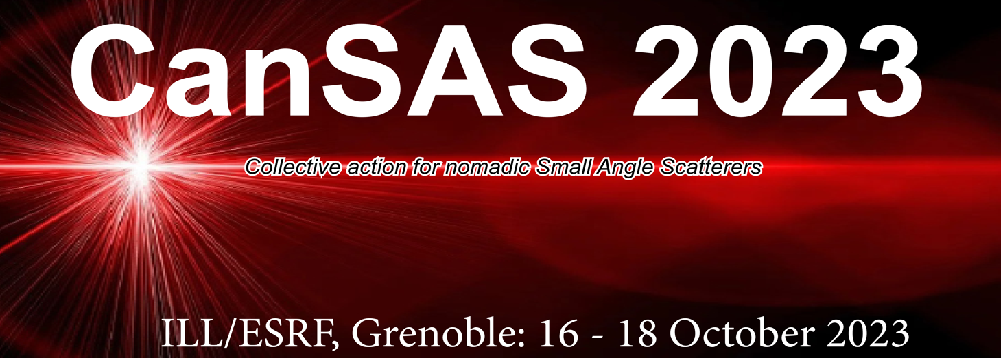Speaker
Description
SAXSutilities is a software package which has been developed since more than 15 years for on-line processing and analysis of Small-Angle X-ray Scattering data at beamline ID02, ESRF. The original version was based on Matlab . However, since 2019, the program was entirely rewritten using Python3 [Sztucki] and is fully integrated in the data reduction pipeline of the beamline. It is also available for download as a complete package containing all required libraries for Windows and Linux (Debian / Ubuntu).
It features (A) a file browser from where the user can select multiple one-dimensional scattering datasets [I(q)] for simultaneous plotting with error bars, scattering background subtraction and specific plot modes like Porod, Guinier, Kratky and 3D plots. Datasets recorded with two different detectors in SAXS/WAXS mode can be automatically combined. (B) Tools for data reduction of one-dimensional files are available in a separate section and allow operations like averaging,
background subtraction, re-binning or merging datasets recorded at different sample to detector distances with error propagation and logging of the data reduction history. Data conversion between specific HDF5 and a simple ASCII format is included as well as conversion of the q-scale between [nm-1] and [Å-1]. (C) Two-dimensional data can be plotted using different coordinate systems which respect pixel sizes, center coordinates, etc. Necessary metadata can also be provided manually to the program when they are not available in the header of the files. Composite images of moderate size can be calculated and procedures for creating software masks, finding of
beam center, WAXS distance calibration, etc. are available. (D) Further tools focus on the offline data reduction of two-dimensional scattering data. Here, the program serves as a graphical user interface for the SAXS programs [Boesecke] and the data reduction pipeline at ID02 (Dahu) using PyFAI [Kieffer]. In addition, it allows for example the partial angular averaging of oriented samples, covering the typical gaps of 2D pixel detectors with symmetric scattering data of the same image and converting between EDF data format and the ESRF implementation of HDF5.
The presentation will introduce the features of the program and discuss the possibilities of making it available for other variants of the “HDF5 format” in order to open up all the features of the program to other beamlines / facilities.
[Sztucki] Sztucki M. (2021). Zenodo. https://doi.org/10.5281/zenodo.5825707
[Boesecke] Boesecke, P. (2007). J. Appl. Cryst. 40, s423–s427.
[Kieffer] Kieffer, J. & Drnec, J. (2021). https://doi.org/10.5281/zenodo.5519542. Kieffer, J. & Kark-
oulis, D. (2013). J. Phys. Conf. Ser. 425, 202012.

